It’s wild to think about just how massive some of the dinosaurs in North America really were. We’re not just talking “big lizard” energy—we’re talking animals the size of buildings roaming ancient landscapes that are now quiet plains, deserts, or neighborhoods. Fossils scattered across the U.S. have revealed creatures so enormous, it’s hard to imagine they ever existed outside of movies or museums.
But they did—long before highways, farms, or cities, these giants ruled the land. From towering herbivores with necks like cranes to predators with teeth as long as your hand, their size alone was enough to leave a mark, both literally and in our imaginations. Looking at the biggest of the bunch gives us a window into a very different version of this continent—one where the ground shook for very different reasons.
Argentinosaurus
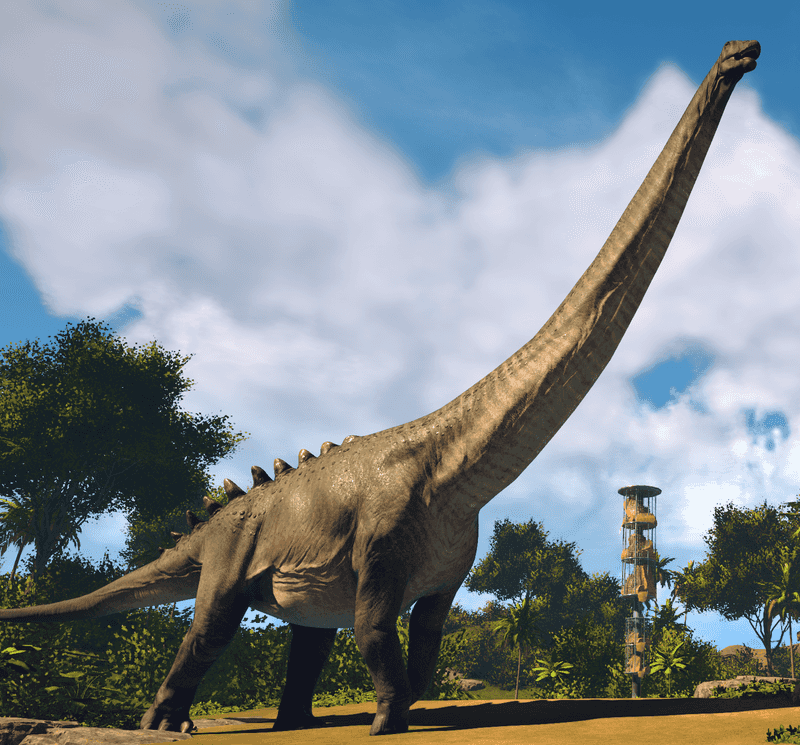
Argentinosaurus wasn’t just a dinosaur; it was a living fortress. With its titanic size, stretching up to 100 feet in length, its presence in North America marked a time of colossal creatures. Imagine a creature so large that it dwarfed everything in its path, creating echoes of ancient power. Historically, its fossils have painted a picture of strength and dominance. The sheer scale of this herbivore, with its long neck and massive body, suggests a life spent grazing vast areas. Whether journeying through forests or open plains, its legacy is etched in every massive bone discovered.
Amphicoelias
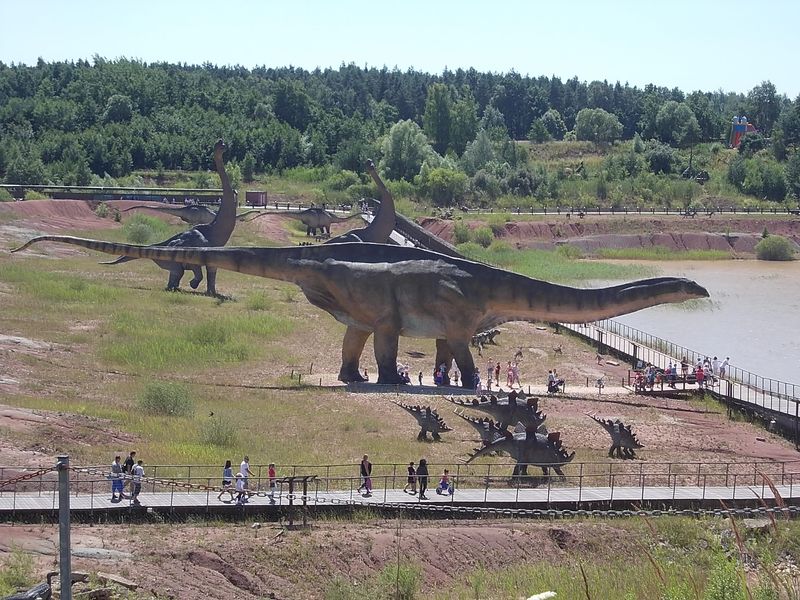
Imagine a creature so large it could stretch over half a football field. Amphicoelias was one that might have been the largest dinosaur ever, yet remains somewhat of a mystery. Its fossil evidence is sparse, but enough to make paleontologists speculate about its sheer magnitude.
In the heart of the Jurassic period, this dinosaur roamed vast regions, possibly weighing as much as several elephants combined. Curiosity surrounds its lifestyle and habits, but much remains unknown. The fragments of its bones ignite imaginations, painting a picture of a time when giants ruled the earth.
Many seek to discover more about Amphicoelias, hoping to unearth secrets of its existence.
Alamosaurus
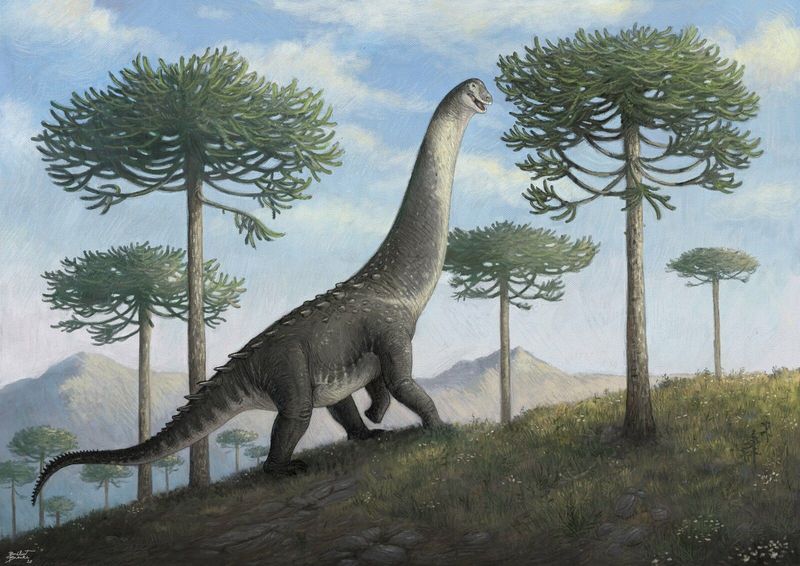
Living in what is now Texas, Alamosaurus was one of the last giant sauropods before the dinosaurs’ extinction. Its long neck and tail were hallmarks of its family, allowing it to reach high vegetation. Standing as a testament to late Cretaceous giants, it roamed the dry lands with a grace that belied its massive frame. Fossils suggest it grew over 60 feet long, making it one of the largest in its era. Alamosaurus shows how even towards the end of the dinosaur age, these creatures continued to evolve and thrive in diverse environments.
Ultrasaurus
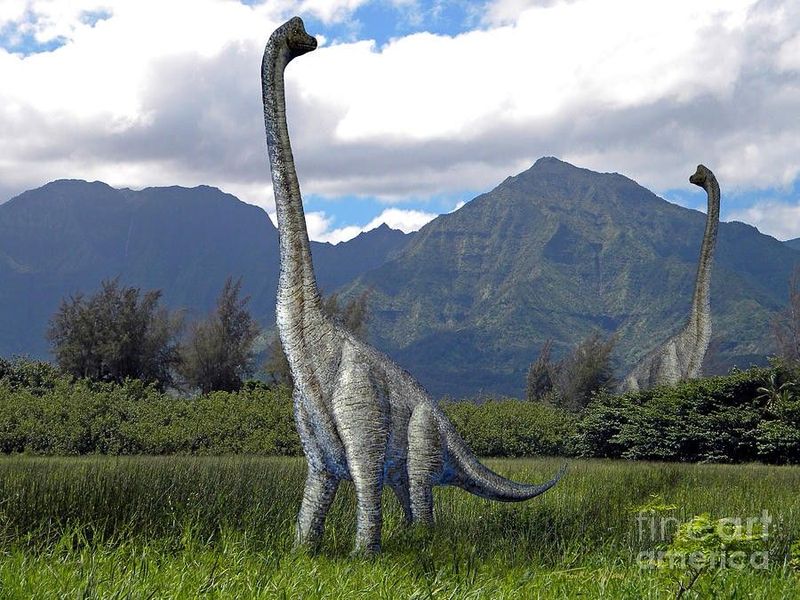
Have you ever imagined a dinosaur that could peer over trees? Ultrasaurus might have been such a giant. Though initially misclassified, this behemoth was redefined as a massive sauropod, capturing the attention of scientists and enthusiasts.
Its existence in the late Jurassic period paints a picture of a world vastly different from today, where such giants thrived. Ultrasaurus’s size and structure hint at fascinating ecosystems that supported these ancient beasts.
The legacy of Ultrasaurus continues to inspire awe, as researchers piece together clues to understand its role in the prehistoric landscape.
Dreadnoughtus
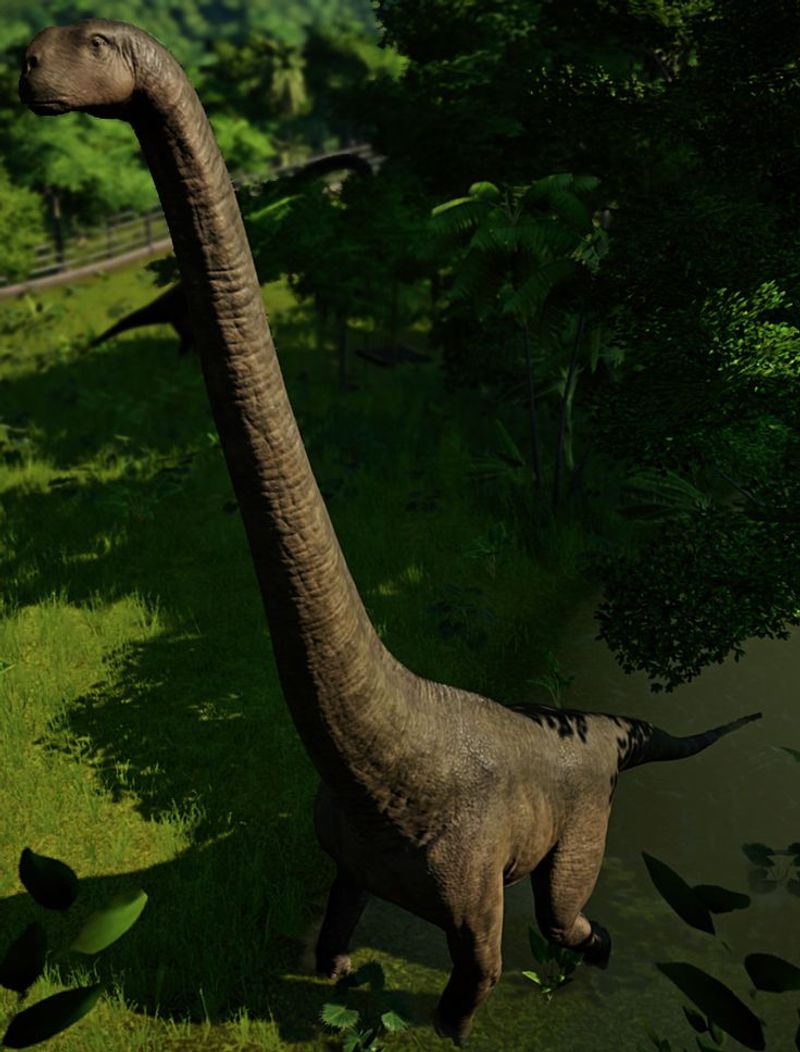
With a name meaning “fear nothing,” Dreadnoughtus certainly lived up to its title. This titanosaur was among the largest known land animals, with fossils discovered in Patagonia providing crucial insights into its colossal size.
Its robust frame and immense tail could intimidate any predator of its time. The sheer scale of Dreadnoughtus fires the imagination, showcasing a creature that truly had few equals.
Paleontologists continue to marvel at its anatomy, revealing aspects of its daily life and environment. The story of Dreadnoughtus remains a testament to the incredible diversity of dinosaur life.
Tyrannosaurus Rex

Tyrannosaurus Rex, often the poster child of dinosaur fame, dominated the late Cretaceous period. Known for its formidable bite and massive skull, it was the apex predator of its time. Roaming across what is now the western United States, it could grow up to 40 feet in length. Its powerful legs and keen senses made it a fearsome hunter. Unlike its towering herbivore contemporaries, T. Rex’s legacy lies in its predatory prowess. Its fossils tell stories of survival and dominance in a world filled with giants. Truly, it was the king of the dinosaurs.
Giraffatitan
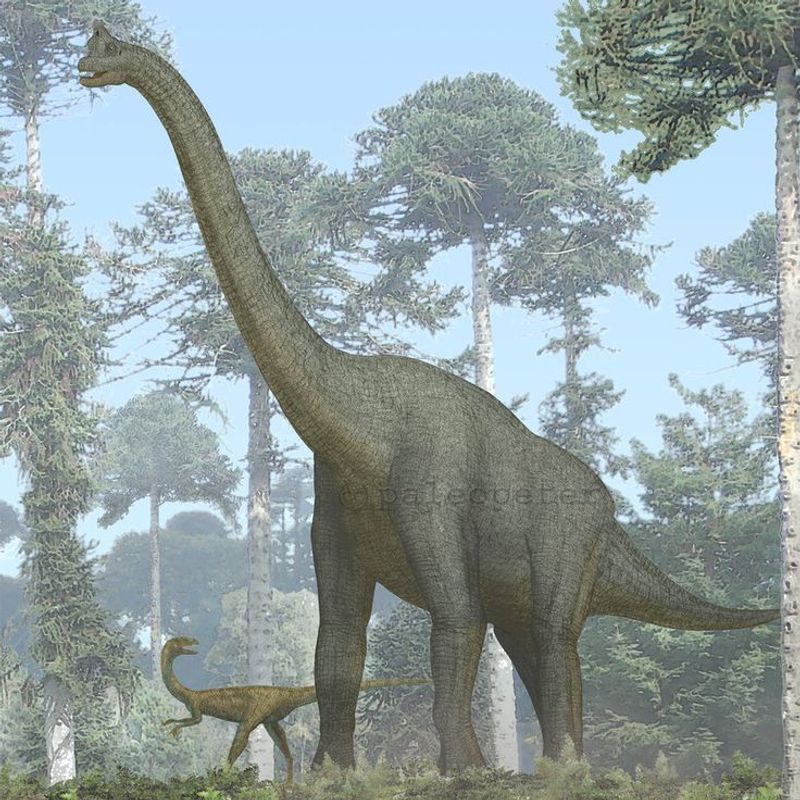
Picture a dinosaur with a neck stretching to the sky, Giraffatitan was such a creature. Similar in appearance to Brachiosaurus, it stood tall in the late Jurassic, dominating its landscape.
Its impressive stature allowed it to reach high vegetation, making it an essential part of its ecosystem. Being compared to a giraffe, Giraffatitan had a unique build that continues to intrigue scientists.
The discovery of its fossils opened a window into the past, offering a glimpse into the lives of the towering giants that once tread the earth.
Futalognkosaurus
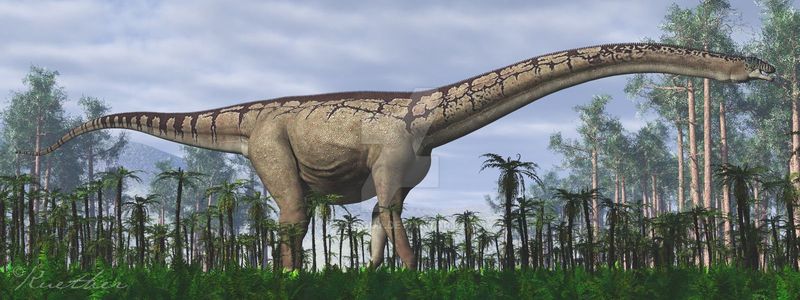
Futalognkosaurus is a name that echoes power and majesty. This giant from the late Cretaceous period roamed what is now South America, leaving behind a legacy etched in fossils.
Its enormous size and distinctive features highlight the diversity of sauropods that once flourished. Futalognkosaurus’s remains have provided valuable insights into the evolution of these giants.
Paleontologists are continually fascinated by its structure and adaptations, piecing together the puzzle of its existence. Each discovery adds depth to our understanding of these magnificent creatures.
Diplodocus

Diplodocus, with its extraordinary length, remains one of the most iconic dinosaurs. Its elongated neck and whip-like tail were balanced by a relatively small head. This remarkable creature roamed the Jurassic landscapes of North America, using its size to reach vegetation other herbivores couldn’t access. Measuring up to 90 feet, it stands as a symbol of the era’s gigantic fauna. Despite its size, it was a gentle giant, moving in herds to graze peacefully. Fossil records illustrate a life adapted to vast, open spaces, where its stature offered a distinct advantage in feeding.
Seismosaurus
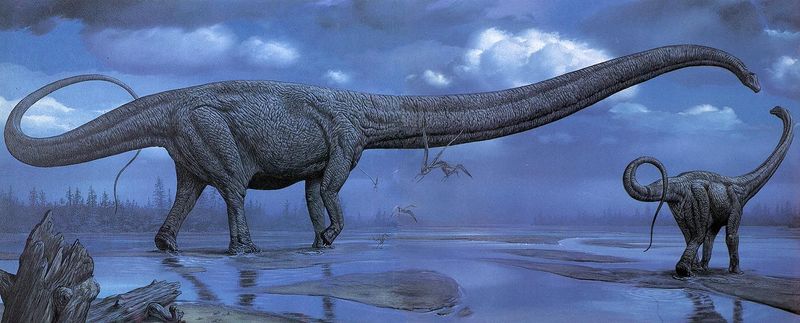
Seismosaurus, aptly named for the “earth-shaker,” was a giant among giants. Its immense length, potentially reaching 110 feet, made it one of the longest dinosaurs known. Roaming the ancient plains of North America, it used its significant size to its advantage. This herbivore likely traveled in large groups, providing safety in numbers. Its massive build required vast amounts of vegetation, contributing to its constant movement. Seismosaurus’s fossils have become crucial in understanding the dynamics of dinosaur life. Through its bones, we glimpse an era where size truly mattered, and survival was a collective endeavor.
Brachiosaurus
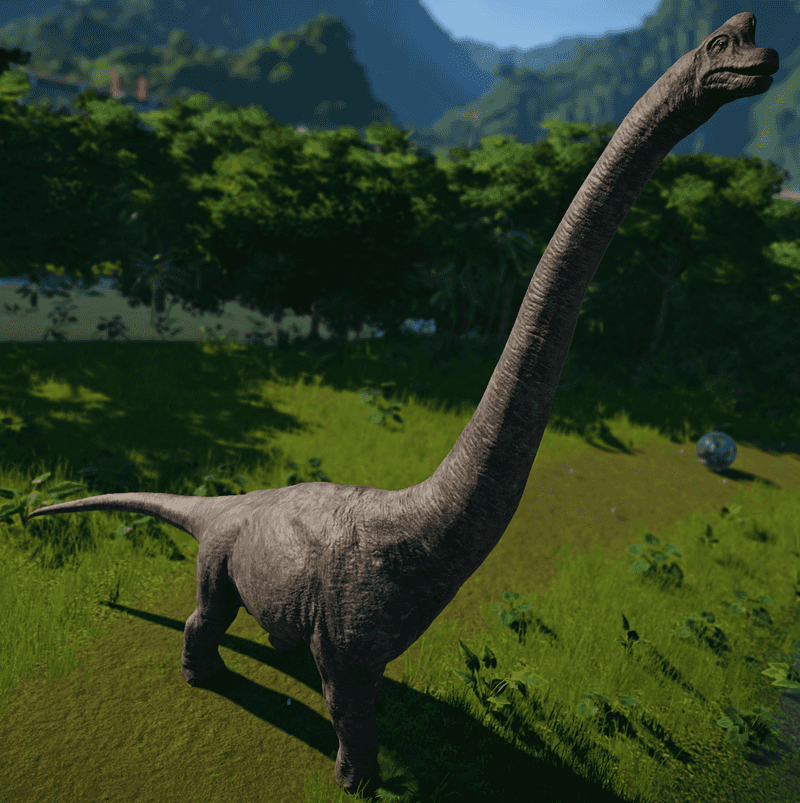
Brachiosaurus stood out with its unique body structure, featuring a long neck held high like a giraffe. Unlike other dinosaurs that had horizontal necks, it towered above, accessing treetop foliage. Predominantly found in what is now the Midwest, its fossils show a creature well-adapted to its environment. At over 50 feet long, Brachiosaurus’s height was a formidable advantage. Its distinct build not only defined its feeding habits but also its movement and interaction with other species. This towering giant exemplified the diversity of dinosaur adaptations in ancient ecosystems.
Supersaurus
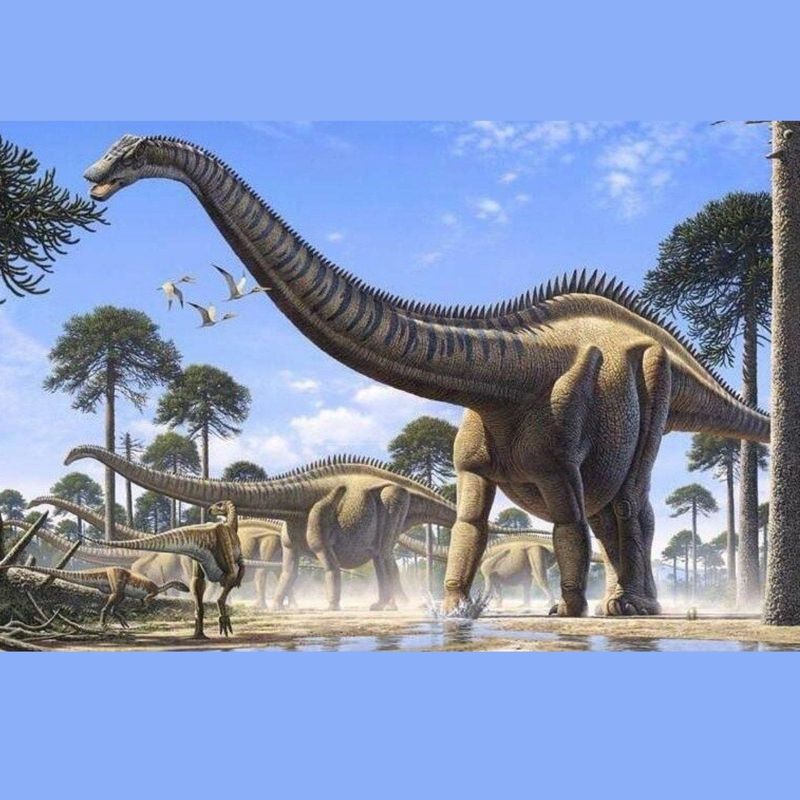
Supersaurus, a fitting name for such an enormous dinosaur, lived during the late Jurassic period. Its length exceeded most of its contemporaries, earning it a place among the giants. Supersaurus fossils found in Colorado illustrate a creature capable of growing over 100 feet. Such dimensions suggest a life spent searching for food in expansive forests. Its long neck allowed it to exploit food sources unavailable to smaller herbivores. As a gentle giant, it likely moved in large herds, offering protection in numbers. Each fossil found adds a new piece to the puzzle of its majestic existence.
Apatosaurus
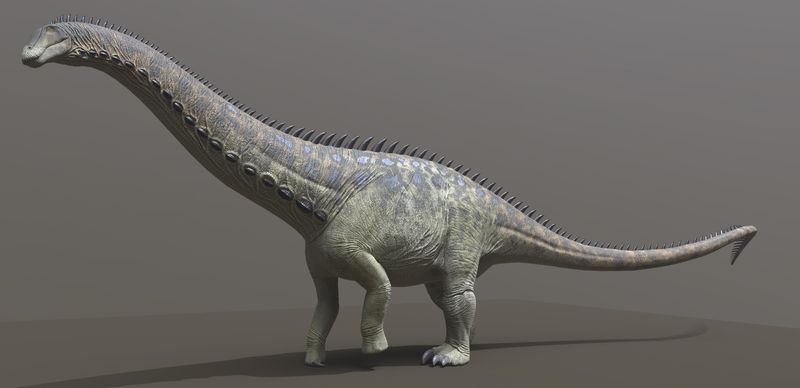
Historically misidentified with its cousin Brontosaurus, Apatosaurus was a true titan of the late Jurassic. Its massive size, with a length reaching up to 75 feet, helped it dominate its environment. Apatosaurus used its whip-like tail for defense and communication. This dinosaur’s fossils tell a tale of strength and resilience, having thrived in North America’s lush landscapes. Grazing on vegetation high and low, it was an essential part of its ecosystem. Apatosaurus’s enduring presence in fossil records provides invaluable insights into the life of one of nature’s great titans.
Barosaurus
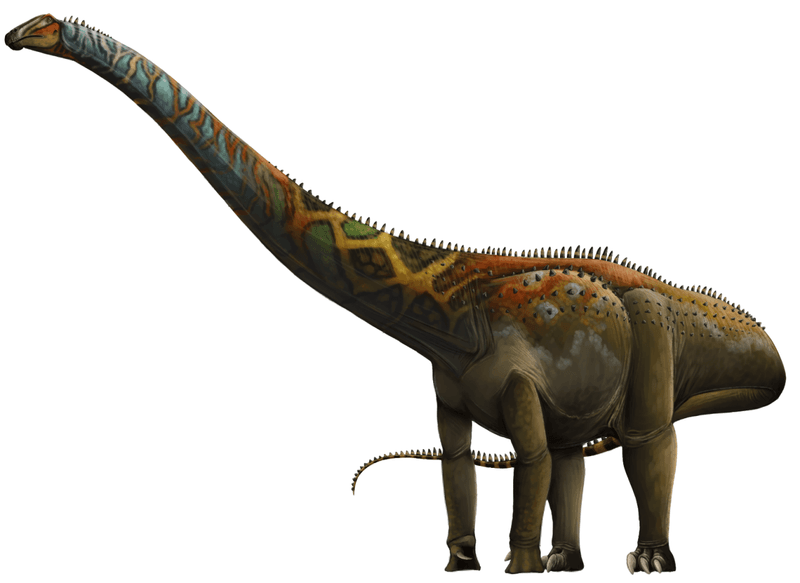
Barosaurus, recognized for its incredibly long neck, was an impressive sight in the prehistoric forests. Unlike many of its relatives, its neck made up a significant portion of its total length, which could exceed 80 feet. This adaptation allowed Barosaurus to access food sources that were unreachable for others. Its fossils, uncovered in areas like the Morrison Formation, depict a creature thriving in diverse environments. Barosaurus’s skeletal structure suggests a highly mobile and adaptable lifestyle, constantly on the move in search of sustenance. It was a true embodiment of evolutionary ingenuity.
Sauroposeidon
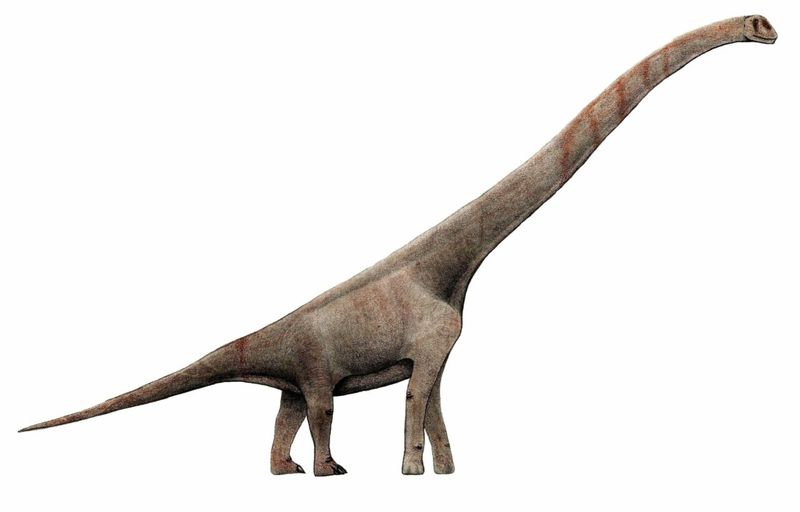
Sauroposeidon, known for its towering height, was one of the tallest dinosaurs ever discovered. Its neck extended an astonishing 40 feet upwards, allowing it to survey its surroundings with ease. Found primarily in what is now Oklahoma, this dinosaur thrived in floodplains and forested areas. Its height was a crucial adaptation, providing access to the highest branches. Sauroposeidon’s bones tell a story of strength and specialization, reflecting the diverse habitats it encountered. As one of the last great sauropods, it represented a pinnacle of dinosaur evolution, combining size with ecological success.

